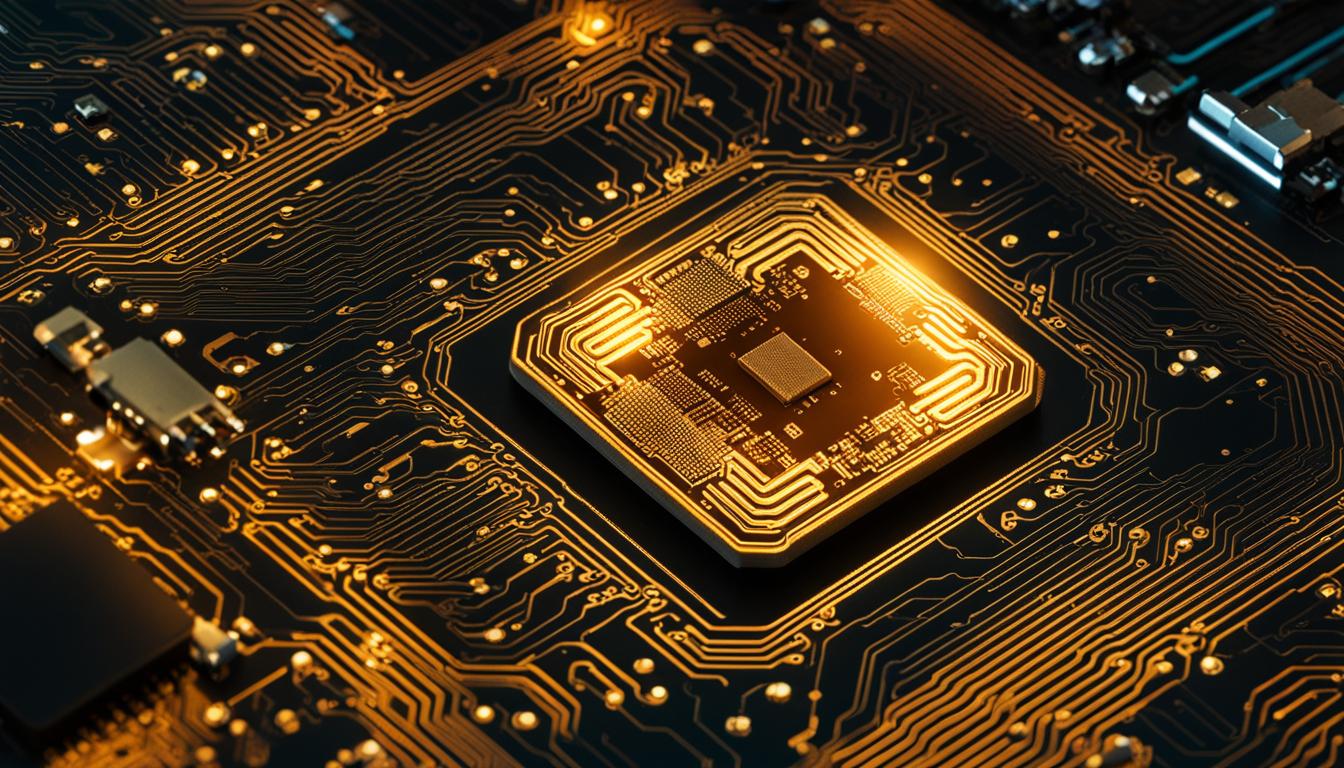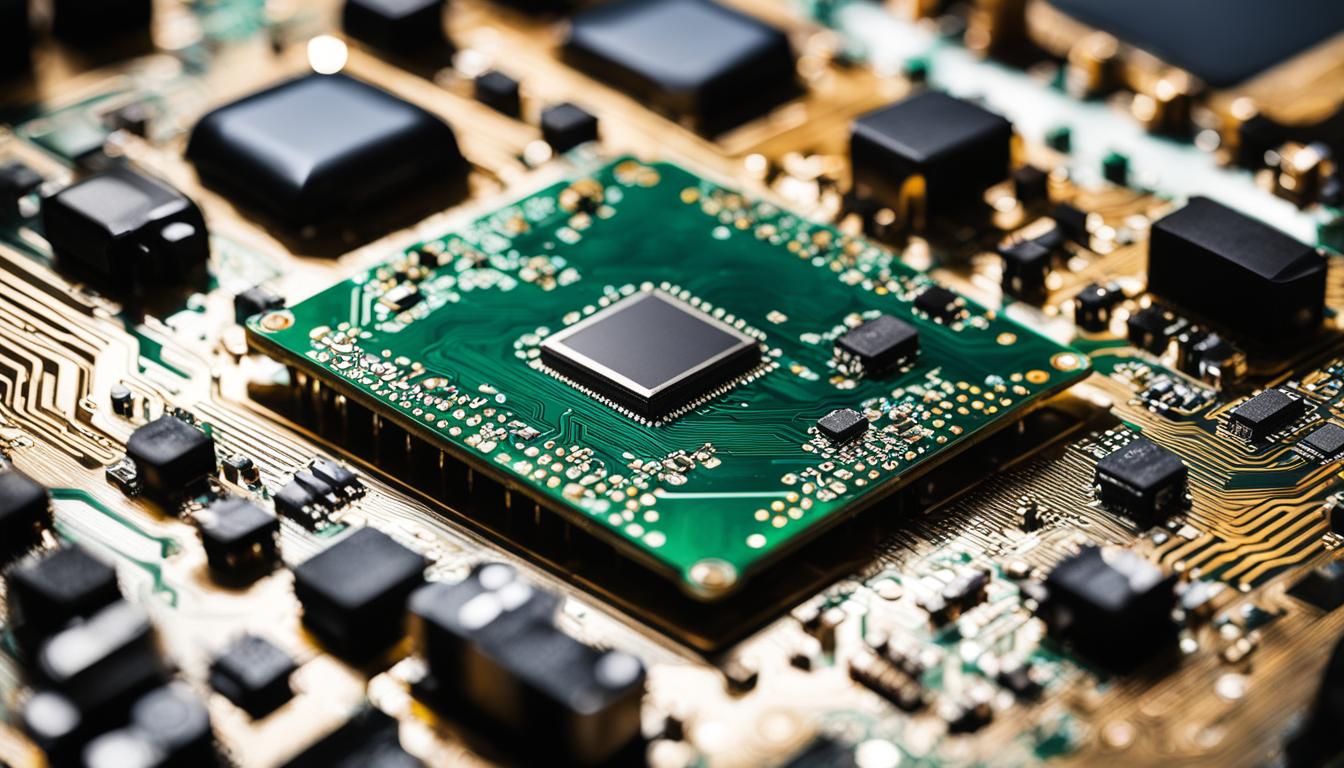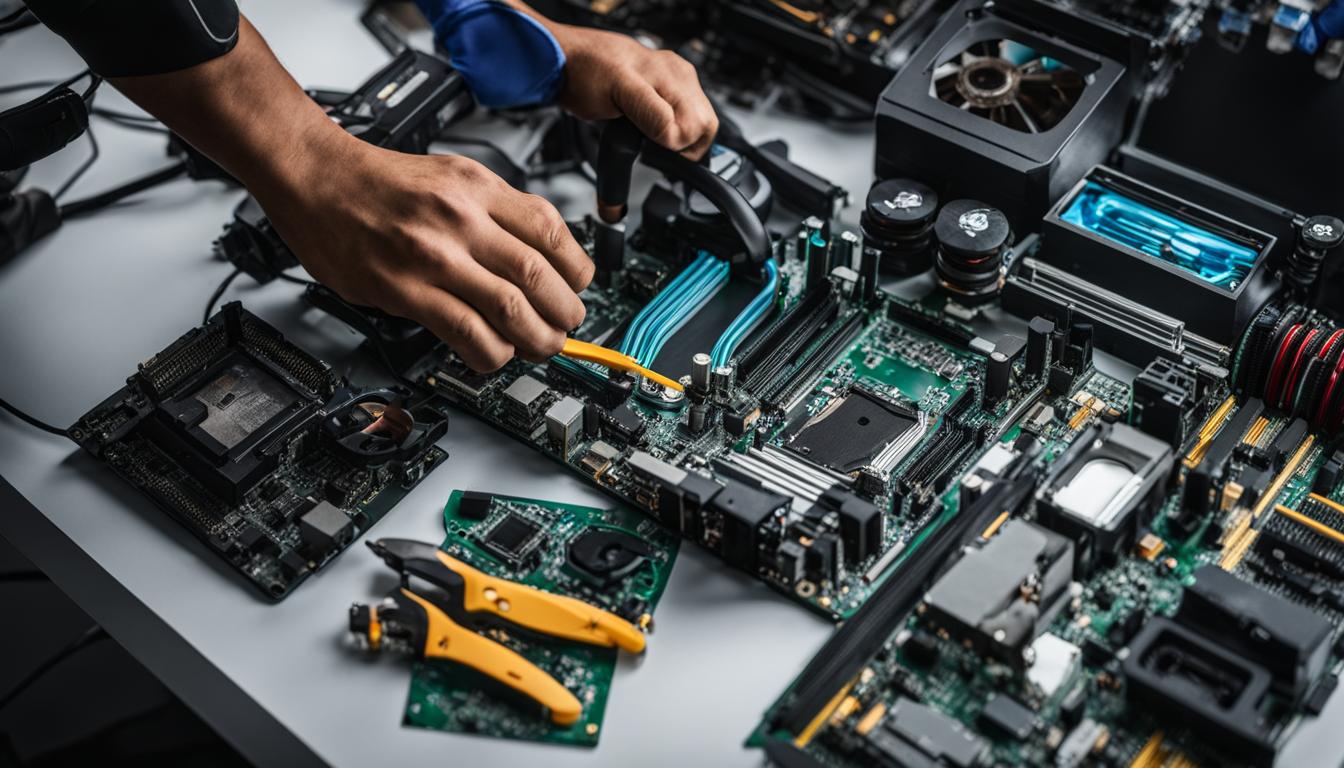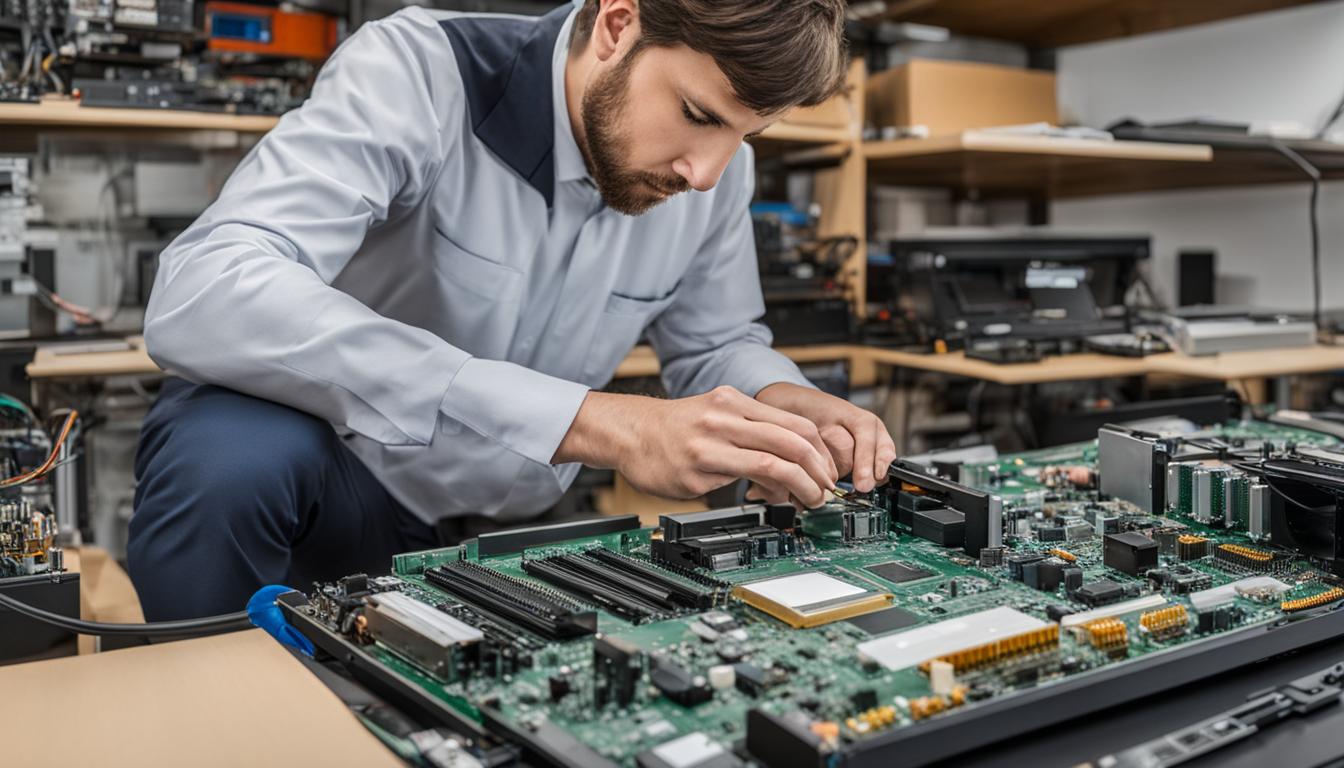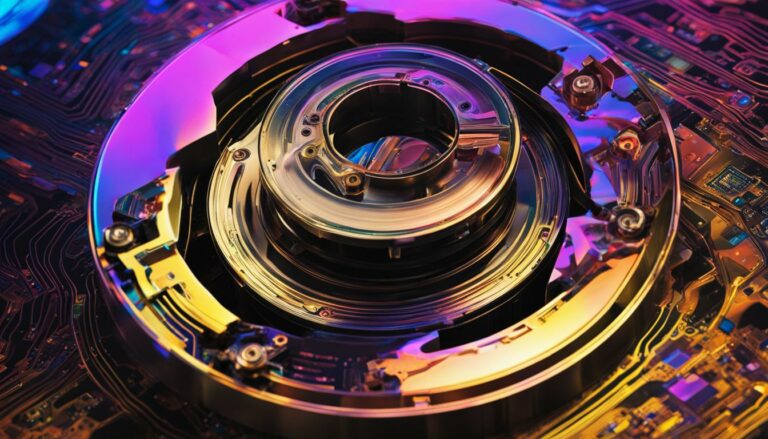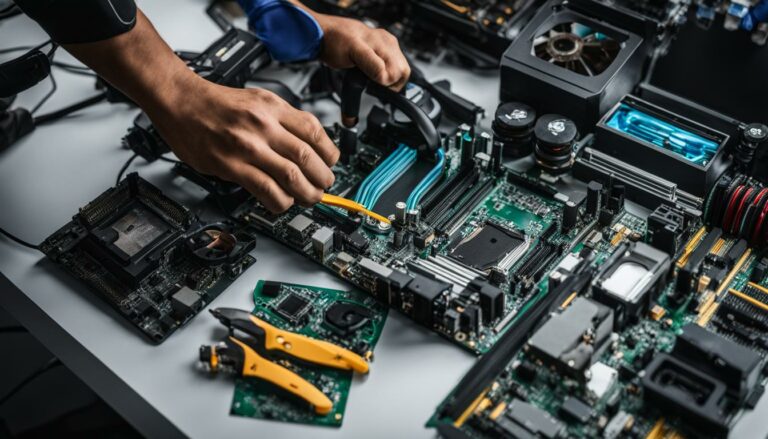The Role of Firmware in Modern Computing and How it Impacts Servicing
Firmware in computing plays a critical role in enabling hardware devices to function and run applications. It is a permanent programming embedded in a device’s non-volatile memory. Firmware serves as the foundation of the software stack that controls various hardware functions, similar to how an operating system controls software applications. It is essential for the operation of devices such as smartphones, IoT devices, and other computer-controlled devices.
Firmware development involves programming the low-level instructions that govern hardware behavior. It requires expertise in firmware programming and understanding the intricacies of embedded systems. Through firmware updates, manufacturers can fix bugs, enhance security, add new features, and ensure compatibility with the latest software and media.
Firmware updates can be automatically downloaded and installed by devices or require manual installation. The frequency of updates varies depending on the device. Firmware is used in different computing equipment, including personal computers, storage devices, mobile devices, automotive systems, home appliances, and smart cards.
Understanding the role of firmware and its impact on servicing is crucial for maintaining the optimal performance and security of computing devices. By staying updated with firmware updates and following best practices, users can ensure their devices are running efficiently and protected against potential vulnerabilities.
Types of Firmware and Their Applications
Firmware can be classified into different types based on its level of hardware integration. Understanding these different types is crucial in understanding their applications and functionalities. The three main types of firmware include:
- Low-level firmware: This type of firmware is considered an integral part of a device’s hardware and is often stored in non-volatile chips like ROM. It provides low-level control and cannot be updated or rewritten. Low-level firmware is commonly found in microcontrollers and other embedded systems.
- High-level firmware: Unlike low-level firmware, high-level firmware allows for updates and is more complex. It resides on flash memory chips and can be upgraded. High-level firmware is commonly used in devices like smartphones, tablets, and IoT devices.
- Subsystem firmware: Subsystem firmware is part of an embedded system and is comparable to high-level firmware in terms of complexity and upgradability. It plays a crucial role in enabling different components of the system to communicate with each other.
These different types of firmware find applications in various computing devices, including personal computers, storage devices, mobile devices, and automotive systems. Firmware acts as the bridge between the hardware and software components, ensuring their proper functioning and communication. It provides low-level control and enables devices to perform specific tasks.
Firmware security is of utmost importance to prevent unauthorized access, data breaches, and device malfunctions. Hardware manufacturers play a significant role in ensuring firmware security by releasing regular updates and patches to address vulnerabilities.
| Firmware Type | Hardware Integration | Applications |
|---|---|---|
| Low-level firmware | Integral part of hardware | Microcontrollers, embedded systems |
| High-level firmware | Upgradeable | Smartphones, tablets, IoT devices |
| Subsystem firmware | Upgradeable | Embedded systems |
The Importance of Firmware Updates and Best Practices
Firmware updates are crucial for ensuring the optimal performance and security of hardware devices. These updates are designed to fix bugs, enhance functionality, improve security measures, and ensure compatibility with new software and media. In order to deliver these updates, different methods can be employed.
Firmware Over the Air (FOTA) Updates:
One common method is through firmware over the air (FOTA) updates. With FOTA, devices regularly check for new firmware and automatically download and install it. This method simplifies the update process for users, as they don’t need to manually search for updates or visit the manufacturer’s website.
Manual Firmware Updates:
Alternatively, some devices require manual firmware updates. Users need to visit the manufacturer’s website to download the latest firmware and follow the installation instructions. While this method may be more time-consuming, it allows users to have more control over the update process.
The frequency of firmware updates varies depending on the device type and manufacturer. Some devices receive regular updates, while others may have less frequent updates. It is important for users to stay informed about firmware updates for their devices and follow best practices to ensure successful updates.
Best Practices for Firmware Updates:
To ensure the successful update of firmware, it is crucial to keep the device powered on during the update process. Interrupting the update, such as by turning off the device or disconnecting it from the power source, can lead to corruption and potential issues with the device.
In addition, if users encounter any issues during the update process or experience problems with their device after the update, firmware troubleshooting may be required. This may involve checking for any error messages, consulting the device’s user manual, or reaching out to the manufacturer’s support team for assistance.
By following best practices for firmware updates, such as keeping devices up to date, avoiding untrusted storage devices, protecting against malicious firmware, and registering hardware devices for updates, users can enhance the performance and security of their computing devices.
Differentiating Firmware from Software
While firmware is a form of software, there are key differences that set it apart. Firmware provides low-level control for hardware devices, enabling them to function and communicate with other software. It is permanently embedded in a device’s read-only memory and cannot be easily changed or replaced without replacing the hardware component. Software, on the other hand, is designed for user interaction and performs specific tasks. It is more complex and not as bound to the underlying hardware. Examples of software include operating systems and applications. Firmware that is embedded in flash memory chips can be updated more easily than firmware written to ROM or EPROM. Understanding the distinction between firmware and software is important in maintaining and troubleshooting computing devices.
The Differences
To better understand the differences between firmware and software, consider the following:
- Firmware is permanently embedded in a device’s read-only memory, while software is designed for user interaction and can be installed, updated, or removed.
- Firmware provides low-level control for hardware devices, enabling them to function and communicate with other software, while software performs specific tasks and is more flexible in terms of functionality.
- Firmware is typically stored in non-volatile memory, such as ROM or flash memory chips, while software is stored in disk drives, solid-state drives, or other writable storage media.
- Updating firmware usually requires specialized tools or processes, while software can be updated through regular software update mechanisms, such as over-the-air updates or manual installations.
By understanding the distinction between firmware and software, users can effectively troubleshoot issues, perform necessary updates, and ensure the proper functioning of their computing devices.
| Aspect | Firmware | Software |
|---|---|---|
| Storage | Permanently embedded in non-volatile memory (ROM or flash memory chips) | Stored in writable storage media (disk drives, solid-state drives) |
| Function | Provides low-level control for hardware devices | Performs specific tasks and enables user interaction |
| Update | Requires specialized tools or processes | Can be updated through regular software update mechanisms |
| Flexibility | Less flexible in terms of functionality | More flexible and adaptable |
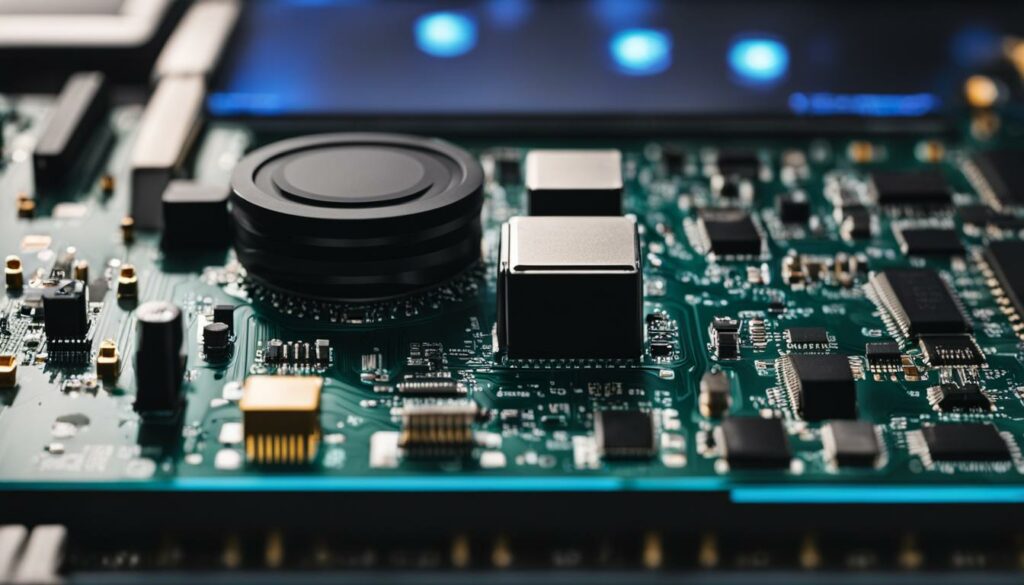
Understanding the differences between firmware and software is crucial for anyone working with computing devices. Firmware provides the low-level control that enables hardware devices to function and communicate, while software performs specific tasks and allows for user interaction. Firmware is permanently embedded in a device’s read-only memory, making it less flexible and harder to update compared to software. Software, on the other hand, can be installed, updated, and removed more easily. By distinguishing between firmware and software, users can better troubleshoot issues, perform necessary updates, and ensure the optimal performance of their computing devices.
Conclusion
Firmware plays a crucial role in modern computing, serving as the foundation of the software stack that enables hardware devices to function and run applications. It is installed during manufacturing and controls the functions of various devices and systems. Firmware development and firmware programming are essential for creating reliable and efficient firmware that meets the specific requirements of different devices.
Firmware updates are important for fixing bugs, improving security, and ensuring compatibility with new software and media. Regular firmware updates are necessary to keep devices up to date and enhance their performance. However, it is crucial to prioritize firmware security to prevent unauthorized access and potential firmware attacks.
Understanding the distinction between firmware and software is important in troubleshooting and maintaining computing devices. Firmware provides low-level control for hardware devices, while software performs specific tasks and interacts with users. By following best practices for firmware updates and ensuring firmware security, users can confidently rely on their computing devices for optimal performance and security.
In conclusion, firmware is a critical component of modern computing, and its development, programming, and security are key considerations for both hardware manufacturers and end users. Advances in firmware technology will continue to shape the future of computing, enabling devices to become more powerful, efficient, and secure.
FAQ
What is firmware?
Firmware is programming that is permanently embedded into a hardware device’s non-volatile memory. It serves as the foundation of the software stack that computer hardware uses for basic operations and running applications.
What is the purpose of firmware updates?
Firmware updates are important for fixing bugs, improving security, adding new features, and ensuring compatibility with new media. They help maintain the optimal performance and security of hardware devices.
How often do firmware updates occur?
The frequency of firmware updates varies depending on the device, with some devices automatically downloading and installing updates, while others require manual installation. It depends on the device type and manufacturer’s policies.
Can firmware be updated or rewritten?
It depends on the type of firmware. Low-level firmware, which is integral to the hardware, cannot be updated or rewritten. High-level firmware, on the other hand, allows for updates and resides on flash memory chips.
What is the difference between firmware and software?
Firmware provides low-level control for hardware devices, while software is designed for user interaction and performs specific tasks. Firmware is permanently embedded in a device’s read-only memory, while software is more flexible and can be changed or replaced without replacing the hardware component.
How can I ensure successful firmware updates?
To ensure the successful update of firmware, it is crucial to keep the device powered on during the update process to avoid corruption. It is also important to follow the manufacturer’s instructions and best practices for firmware updates.
Why is firmware security important?
Firmware security is paramount to prevent attacks such as firmware hacking, which can lead to unauthorized access and control of devices. Manufacturers play a significant role in ensuring firmware security by releasing regular updates and patches.
